For my work, I frequently have to collect reasonably large datasets from a MySQL database, e.g. several parameters for several locations, and store that data in a CSV file per location. For this, I've written a small GUI. Since, the data has to be stored per location, I thought I'd take advantages of my 8-thread CPU and use the multiprocessing package to query the database per location. This works just fine, but I also want to keep track of how far the data retrieval and file writing is.
The trick with using multiprocessing together with Tkinter was to put the function that is called in the multiprocessing outside of the GUI class, but how do I get information from that function back into the class?
My code so far:
from multiprocessing import Process
from tkinter import *
import os
import pandas
import pymysql
class App:
def __init__(self, master):
self.master = master
self.stations = None
self.variables = None
self.startdtg = None
self.enddtg = None
self.outputlocation = "C:/Users/test"
self.processes = []
Label(master, text="Locations:").grid(row=0, column=0, sticky=W, columnspan=3)
self.locationEntry = Entry(master)
self.locationEntry.grid(row=0, column=1, sticky=EW, columnspan=3)
Label(master, text="Enter variables:").grid(row=1, column=0, sticky=W)
self.varEntry = Entry(master)
self.varEntry.grid(row=1, column=1, sticky=EW, columnspan=3)
Label(master, text="Start DTG:").grid(row=2, column=0, sticky=W)
self.startEntry = Entry(master)
self.startEntry.grid(row=2, column=1, sticky=EW)
Label(master, text="End DTG:").grid(row=2, column=2, sticky=W)
self.endEntry = Entry(master)
self.endEntry.grid(row=2, column=3, sticky=EW)
Label(master, text="Output location:").grid(row=3, column=0, sticky=W)
self.outputEntry = Entry(master)
self.outputEntry.grid(row=3, column=1, columnspan=2, sticky=EW)
self.startButton = Button(master, text="Start", command=self.get_data)
self.startButton.grid(row=5, column=1, sticky=EW)
def get_data(self):
self.update_variables()
self.collect_data()
def update_variables(self):
self.stations = [station.strip() for station in self.locationEntry.get().split(",")]
self.variables = [variable.strip() for variable in self.varEntry.get().split(",")]
self.startdtg = self.startEntry.get()
self.enddtg = self.endEntry.get()
self.outputlocation = os.path.join(self.outputlocation, self.outputEntry.get())
def collect_data(self):
for station in self.stations:
p = Process(target=query_database, args=(station, self.variables, self.startdtg, self.enddtg, self.outputlocation))
self.processes.append(p)
p.start()
def query_database(station, variables, startdtg, enddtg, outputlocation):
""""Function that collects and writes data to local drive"""
if __name__ == "__main__":
root = Tk()
app = App(root)
root.mainloop()
To be clear: this code works fine. It produces this GUI:

What I want, is a GUI like this:
With the part showing the progress of the query_database function, meaning it has to update when a step in that function has been completed.
How would I approach this? Also, feel free to give any comments about my coding, I'm still learning the basics of GUIs and setting up classes.
